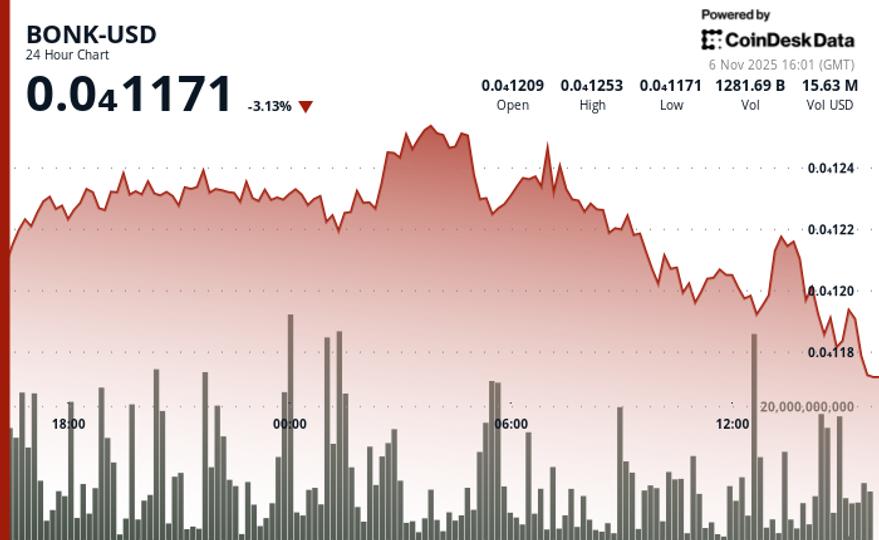Modular oracle network RedStone launched Credora, a decentralized finance (DeFi)-native risk ratings platform aiming to bring transparency and credit analytics to lending protocols.
RedStone said on Thursday that it had expanded beyond price feeds into the broader domain of credit, collateral and risk intelligence through its Credora acquisition in September.
At launch, Credora by RedStone integrates with DeFi lending markets Morpho and Sparks to offer dynamic risk scores and default-probability analytics, accessible through an API.
RedStone co-founder Marcin Kaźmierczak said the launch marked a pivotal step toward the “Low-Risk DeFi” movement, which aims to strike a balance between yield generation and verifiable, data-driven transparency.
From oracles to risk intelligence
The move positions RedStone as one of several blockchain oracle providers moving beyond raw data delivery toward integrated risk analytics.
On Oct. 14, S&P Global Ratings and Chainlink partnered to provide onchain stablecoin risk profiles for traditional finance players looking to expand or enter the stablecoin market. The two organizations will provide onchain access to stablecoin stability assessments, which rate each stablecoin by how well it maintains its peg.
In addition to stablecoin risk profiles, the US government has also recently tapped oracle providers Chainlink and Pyth to boost transparency on economic data. This makes analyzing economic risk factors more accessible.
Blockchain security firm Hacken also moved into providing services aimed at DeFi risk. On Thursday, the company announced the launch of Yield Audits, a service that helps prove the security, sustainability and dependency resilience of stablecoins, real-world assets (RWAs) and DeFi yields.
Hacken said its Yield Audits aim to become the “missing credit-rating equivalent” for crypto yield. The company said the service includes three core stages, which include security and infrastructure, financial sustainability and dependency and systemic risk.
Credora by RedStone consolidates creditworthiness data, default probabilities and collateral analytics into a unified ratings layer.
This means that users can compare vault and loan positions on Morpho or Spark by relative risk scores, which is a key factor for institutional investors looking to explore tokenized treasuries, private credit and structured DeFi products.
“A new era for risk versus yield perception in DeFi is emerging with Credora,” Kaźmierczak said in the announcement.
How Credora by RedStone works
Kaźmierczak told Cointelegraph that Credora takes a granular look at a diverse range of factors that influence the risk of any lending pool or asset in DeFi.
By using historical data, statistical simulations, credit analysis and assessment of onchain risks, Credora quantifies the probability of a loss when lending into any lending pool.
“This allows you to map these outputs to ratings, and allow comparability across very different opportunities or even offchain instruments,” Kaźmierczak explained.
He told Cointelegraph that Credora by RedStone has already completed ratings on Morpho and SparkLend, but ratings won’t be displayed on the front-end of these apps just yet.
“We will work with Morpho and Spark to display on their front ends, and expect the first ratings display to happen in mid-November,” he added.
Related: From Taylor Swift to rate cuts, RedStone brings real-world bets onchain with Kalshi
Responding to the $20 billion DeFi wipeout in October
The timing of Credora’s launch underscores renewed urgency toward systemic risk management in DeFi.
The launch came just weeks after the Oct. 10 market crash, when over $20 billion in leveraged crypto positions was liquidated across exchanges and DeFi lending markets.
In addition to the $20 billion liquidation incident in October, Stream Finance’s recent $93 million loss sparked an investigation into the interconnectedness of DeFi and stablecoin credit risks. On Tuesday, DeFi analysts identified $284 million in stablecoin and DeFi risks associated with Stream Finance.
By introducing standardized risk scoring, RedStone hopes to make these blind spots visible before another cascade occurs.
“Until now, DeFi participants have had to piece together risk information from multiple sources — or worse, make decisions based on APY alone,” said Spark co-founder Sam MacPherson. “Credora brings clarity to yield and risk.”
Magazine: Solana vs Ethereum ETFs, Facebook’s influence on Bitwise: Hunter Horsley
.png)
 3 hours ago
2
3 hours ago
2




